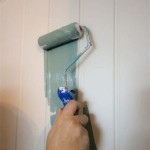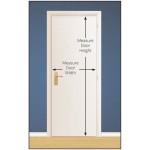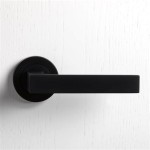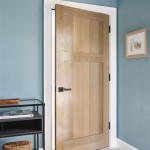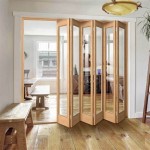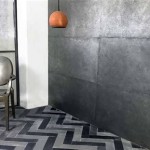What Is Modern Interior Style?
Modern interior design is a style that emerged in the early 20th century as a reaction to the ornate and overly decorated styles of the past. It emphasizes clean lines, simplicity, functionality, and a focus on form and materials. Modern design is characterized by its minimalist aesthetic, with a preference for neutral colors, natural materials, and geometric shapes. While often associated with a sleek, contemporary look, modern interior design encompasses a broad spectrum of styles, each with its own unique characteristics and influences.
Key Features of Modern Interior Design
Modern design is characterized by several core features that define its aesthetic and influence its application in different spaces. These features include:
Simplicity and Clean Lines
Modern design prioritizes simplicity and clean lines. This is evident in furniture, where sleek silhouettes, minimal ornamentation, and straight edges dominate. Walls are often kept free of clutter, and decorative elements are used sparingly. The focus is on creating a sense of openness and spaciousness, achieved through uncluttered surfaces and streamlined forms.
Functionality
Modern design is deeply rooted in functionality. Each element in a modern space serves a purpose and contributes to the overall efficiency of the room. Furniture is often multi-functional, serving as storage, seating, or both. This emphasis on practicality extends to lighting, where bright and efficient fixtures illuminate the space effectively. The focus on functionality fosters a sense of order and practicality within the design.
Neutral Color Palette
Modern design typically features a neutral color palette, often using black, white, gray, and beige as the foundation. These colors provide a clean backdrop for pops of color in accessories, artwork, or upholstery. The use of neutral colors promotes a sense of calm and serenity, allowing the focus to be on the architectural lines and the chosen furniture pieces.
Natural Materials
Modern design values natural materials for their inherent beauty and sustainability. Wood, leather, stone, and metal are commonly used in furniture, flooring, and accents. These materials contribute to a sense of warmth and authenticity, while also reflecting the modern design’s emphasis on environmental awareness.
Geometric Shapes
Geometric shapes are prevalent in modern design, with circles, squares, rectangles, and triangles frequently appearing in furniture, lighting, and architectural details. The use of geometric shapes adds a sense of structure and order to the space, further emphasizing the modern aesthetic’s focus on clean lines and simplicity.
Modern Interior Design Styles
While modern design shares these core features, it encompasses a broad spectrum of styles, influenced by different periods, artists, and movements. Some of the most popular modern interior design styles include:
Mid-Century Modern
Mid-century modern design emerged in the mid-20th century, characterized by organic shapes, warm wood tones, and a focus on comfort. This style, often associated with the iconic designs of Charles and Ray Eames, is known for its timeless appeal and playful aesthetic. Mid-century modern furniture features distinctive shapes, often with tapered legs and rounded corners, reflecting the era’s fascination with the natural world.
Scandinavian Modern
Scandinavian modern design, originating in the Scandinavian countries, emphasizes simplicity, functionality, and a connection with nature. This style features a minimalist aesthetic, with a focus on natural materials like wood and wool, and a preference for light, airy spaces. Scandinavian interiors often feature a neutral color palette with pops of color in textiles and accessories, creating a sense of warmth and cozy ambiance.
Contemporary Modern
Contemporary modern design represents a more contemporary interpretation of the modern aesthetic, incorporating elements of minimalism, industrialism, and eclecticism. This style embraces bold colors, geometric patterns, and unexpected textures, creating a dynamic and vibrant atmosphere. Contemporary modern spaces often feature open floor plans, statement furniture, and a focus on creating a unique and personal style.
Modern interior design has evolved significantly since its inception, adapting to contemporary trends and incorporating new materials and technologies while maintaining its core principles of simplicity, functionality, and a focus on form and materials. The versatility of modern design allows it to be interpreted in a range of ways, from the sleek minimalism of a contemporary apartment to the warm and inviting ambiance of a mid-century modern home.

Contemporary Vs Modern Interior Design Everything To Know Décor Aid

Modern Interior Design 6 Key Types For Roomsets

Contemporary Interior Design Style All You Need To Know Beautiful Homes

Design Styles A Look At Modern Vs Contemporary Interior

Difference Between Modern Vs Contemporary Interior Design

Evergreen Design Elements That Define Contemporary Interiors 7 Features Last The Test Of Time Archdaily

Modern Interior Design To Transform Your Space Designcafe

Contemporary Design Style 101 Everything You Need To Know About

What Is Contemporary Interior Design Amp How To Get It Right

Contemporary Design Style And The Essentials To Master It Décor Aid
Related Posts

